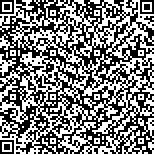|
|
| |
|
|
| 本文已被:浏览 1797次 下载 1254次 |

码上扫一扫! |
|
|
| 氨氮胁迫对方斑东风螺六种免疫酶活性的影响 |
|
谭春明1,2,3, 赵旺1,2,3, 吴开畅1,2, 张玥4, 杨蕊1,3, 温为庚1,2,3, 陈旭1,2,3, 于刚1,2
|
|
1.中国水产科学研究院南海水产研究所, 热带水产研究开发中心, 海南 三亚 572018;2.农业部南海渔业资源开发利用重点实验室, 广东 广州 510300;3.三亚热带水产研究院, 海南 三亚 572018;4.海南大学, 海洋学院, 海南 海口 570228
|
|
| 摘要: |
| 本文研究了氨氮对方斑东风螺(Babylonia areolata)的急性毒性及不同浓度的氨氮溶液(22、47.5、102和220 mg/L)对其体内六种免疫酶过氧化氢酶(CAT)、酸性磷酸酶(ACP)、碱性磷酸酶(AKP)、总超氧化物歧化酶(T-SOD)、谷胱甘肽过氧化物酶(GSH-PX)和过氧化物酶(POD)活性的影响。实验结果表明:氨氮浓度越大,其毒性作用越强,方斑东风螺死亡率越高; 500 mg/L氨氮处理组于24 h便出现(20.3±2.1)%死亡率,并且96 h后存活率降为0。而相同条件下,随试验时间的延长,方斑东风螺死亡率也越高。氨氮浓度和处理时间均对方斑东风螺免疫酶活力有显著的影响(P<0.05)。与对照组相比,处理组CAT和AKP活性均表现出“诱导-抑制”的趋势,ACP和T-SOD活性表现出“抑制-诱导”的趋势,CSH-PX活性呈现“诱导-抑制-诱导”的趋势,而氨氮对处理个体POD活性的影响整体表现为抑制作用。可见,养殖水体中的氨氮会对方斑东风螺免疫酶活性产生较大的影响。本研究从生态现象和生理指标相结合的方式阐述了氨氮对方斑东风螺个体的致毒特性,将对方斑东风螺的养殖具有实用意义,同时丰富了氨氮对贝类毒理实验免疫性能层面的基础数据,并为其他贝类氨氮胁迫实验提供参考。 |
| 关键词: 方斑东风螺(Babylonia areolata) 氨氮胁迫 免疫酶 |
| DOI:10.11759/hykx20190110002 |
| 分类号:S917.4 |
| 基金项目:现代农业产业技术体系建设专项资金(CARS-49);广东省渔港建设和渔业产业发展专项(海洋渔业科技推广方向-科技攻关与研发项目,A201601B11);海南省自然科学基金青年基金项目(318QN304);三亚市院地科技合作项目(2018YD19) |
|
| Effects of ammonia nitrogen stress on the activities of six immune enzymes of Babylonia areolata |
|
TAN Chun-ming1,2,3, ZHAO Wang1,2,3, WU Kai-chang1,2, ZHANG Yue4, YANG Rui1,3, WEN Wei-geng1,2,3, CHEN Xu1,2,3, YU Gang1,2
|
|
1.Tropical Aquaculture Research and Development Center of South China Sea Fisheries Research Institute, Chinese Academy of Fishery Sciences, Sanya 572018, China;2.Key Laboratory of South China Sea Fishery Resources Exploitation & Utilization of Ministry of Agriculture, Guangzhou 510300, China;3.Sanya Tropical Fisheries Research Institute, Sanya 572018, China;4.College of Marine Science, Hainan University, Haikou 570228, China
|
| Abstract: |
| This study investigated the acute toxicity of ammonia nitrogen and the effects of stress of different ammonia nitrogen concentrations (0, 22, 47.5, 102, and 220 mg/L) on the activities of the following six immune enzymes of Babylonia areolata:catalase (CAT), acid phosphatase (ACP), alkaline phosphatase (AKP), total superoxide dismutase (T-SOD), glutathione peroxidase (GSH-PX), and peroxidase (POD). Results demonstrated that the higher the concentration of ammonia nitrogen, the stronger the toxicity and the higher the mortality of B. areolata. In the group treated with 500 mg/L ammonia nitrogen, there was 20.3% ±2.1% mortality at 24 h, and the survival rate decreased to 0% after culturing for 96 h. In addition, the mortality of B. areolata increased with the extension of the test duration. Regarding the enzyme activities, both the concentrations of ammonia nitrogen and the treatment duration had a significant effect on the activity of the immune enzymes of B. areolata (P<0.05). Compared with the control groups, the activities of CAT and AKP exhibited a trend of "induction-suppression, " whereas those of ACP and T-SOD generally demonstrated a "suppression-induction" trend. However, with the extension of ammonia nitrogen treatment duration, the activity of CSH-PX exhibited a trend of "induction-suppression-induction." Furthermore, treatment with ammonia nitrogen had an inhibitory effect on POD activity. These results imply that the ammonia nitrogen present in aquaculture water has a greater impact on the immunoenzyme activities of B. areolata. In this study, the combination of ecological phenomena and physiological indicators was applied to delineate the toxicity characteristics of ammonia nitrogen toward individual B. areolata, and the obtained results would imply a practical significance for the culture of B. areolata. In addition, these results would enrich the basic information about the effect of ammonia nitrogen on the immunity of shellfish in toxicology experiments, which can provide a knowledge and scientific basis that can be applied in ammonia nitrogen stress experiments on other shellfish. |
| Key words: Babylonia areolata ammonia nitrogen stress immune enzymes |
|
|
|
|
|
|
